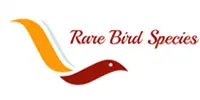Muscovy Duck: A Comprehensive Guide to Characteristics, Habitat, and Behavior
The Muscovy Duck: Understanding Its Physical Traits, Habitat Range, and Behavior
The Muscovy duck (Cairina moschata) is a unique species of waterfowl that stands out due to its distinctive characteristics, diverse habitats, and varied uses. Native to Central and South America, the Muscovy duck has been domesticated and appreciated worldwide for its rich meat and ability to adapt to different environments. This article delves into the fascinating aspects of the Muscovy duck, including its physical appearance, habitat, behavior, health care, historical significance, and comparisons with other duck breeds. By exploring these features, we aim to provide a comprehensive understanding of why the Muscovy duck is a significant species in both ecological and agricultural contexts.
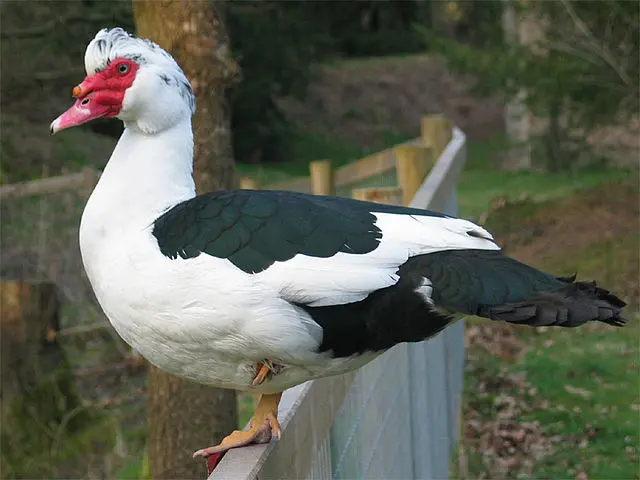
Characteristics of Muscovy Ducks
Muscovy ducks boast a variety of unique characteristics that distinguish them from other duck breeds. Their appearance features striking red facial caruncles and a sturdy, goose-like build, making them instantly recognizable. Size and weight vary between genders, with males significantly larger than females. Color variations in plumage range from black and white to iridescent green hues. In behavior, they are notable for their quieter nature, preferring hissing over traditional quacking. Adaptable to both tropical and cooler climates, Muscovy ducks can thrive in diverse habitats. These traits make them a versatile and interesting species within the waterfowl family.
Physical Appearance
The Muscovy duck possesses a distinct and memorable physical appearance. Unlike many waterfowl, they exhibit sexual dimorphism, where there is a noticeable difference in size and appearance between males and females. Males are substantially larger, measuring between 28 to 33 inches in length and weighing up to 15 pounds or more. Females, on the other hand, are more petite, typically ranging from 26 to 30 inches in length and weighing between 6 to 8 pounds. This marked difference extends to their facial features, where males often showcase pronounced red, wart-like growths known as caruncles.
Their plumage is equally striking, predominantly black and white, with some individuals displaying brilliant iridescent green hues, especially on their wings. The amount of white on the neck and head can vary among individuals, adding further uniqueness to each duck. The bill adds another layer of variety, coming in shades of yellow, pink, black, or combinations of these colors. This variation makes every Muscovy duck uniquely identifiable.
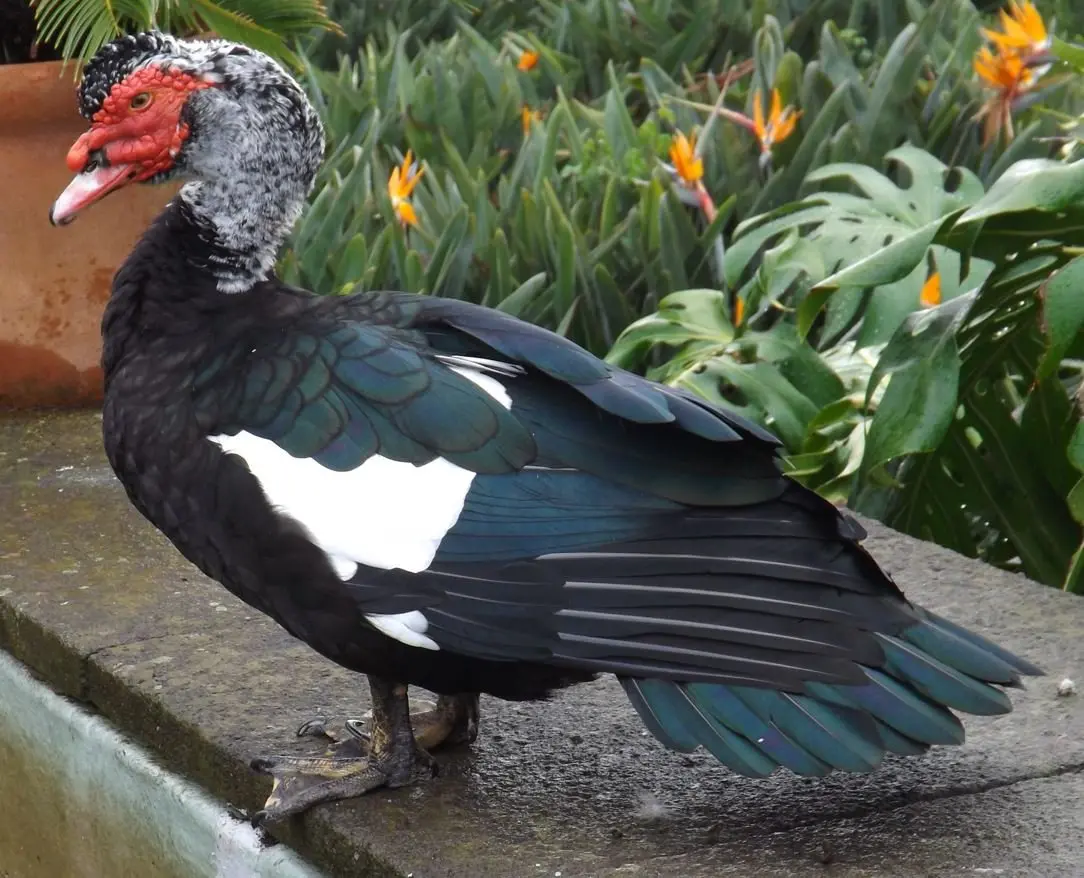
The body structure of Muscovy ducks is reminiscent of small geese, featuring a robust build and long necks. Their wingspan, often between 54 and 64 inches, further emphasizes their strength and capability in flight. Despite this, they are generally more terrestrial, often found roosting in trees rather than nesting on the ground like many other ducks.
Their facial appearance is one of their most distinctive features; the large red caruncles are more pronounced in males and give them a somewhat prehistoric look. Emotional responses to their appearance can be mixed; some find the caruncles intriguing, while others may find them unusual or off-putting. However, these features serve practical purposes, such as aiding in temperature regulation and possibly playing a role in attracting mates.
Overall, the physical appearance of Muscovy ducks combines practicality with a visually arresting uniqueness, making them a favorite among bird enthusiasts and a subject of curiosity for onlookers. Their distinct appearance is not just for show; it allows them to adapt to a variety of environments and stand out in their natural habitat.
Size and Weight
Muscovy ducks are robust and sizable compared to other duck breeds, closely resembling small geese in their stature. Adult males, or drakes, typically measure around 34 inches in length and weigh between 10 to 15 pounds, although weights can vary significantly depending on diet and environment. The females are generally smaller, averaging about 25 inches in length and weighing between 6 to 8 pounds. This size difference is one of the most notable physical traits that set them apart from other ducks.
The wingspan of Muscovy ducks, reaching up to 60 inches, complements their large body structure and enhances their flight capability, although they are more inclined to roost than to migrate long distances. This substantial wingspan and large body size contribute to their impressive silhouette, making them a striking sight whether in flight or at rest.
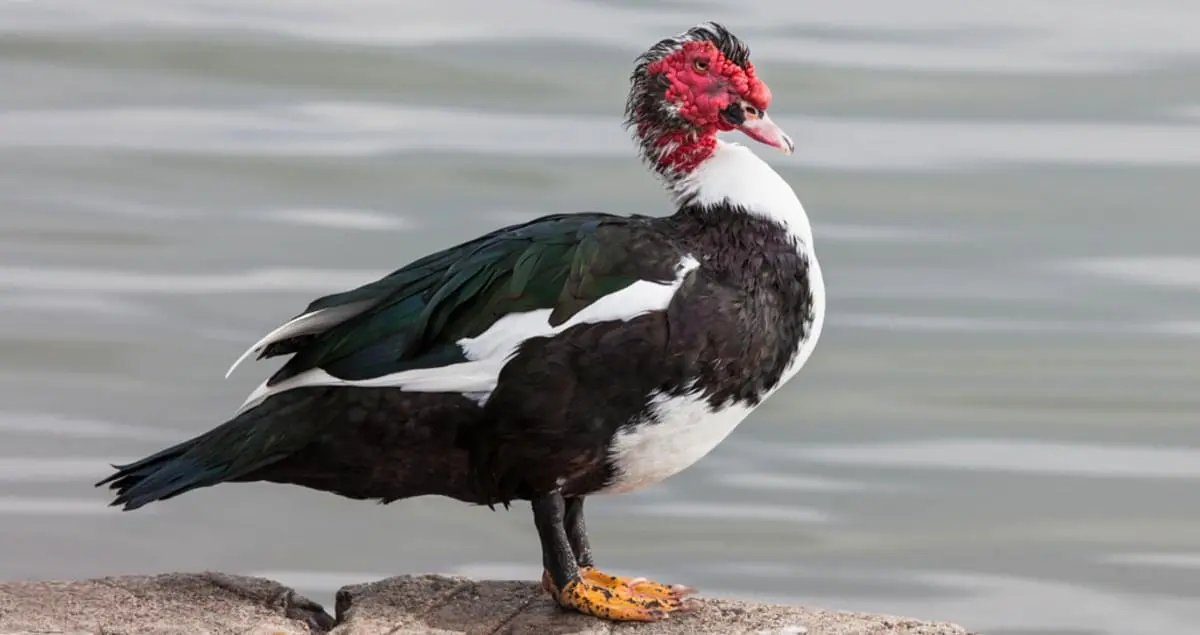
Interestingly, the weight of Muscovy ducks can exhibit considerable variations. Environmental factors and feeding habits play significant roles in their overall health and size. Some individuals in different environments can weigh as little as 2.4 pounds or as much as 9 pounds, showcasing their adaptability to a range of conditions and diets. This variability also underscores the importance of proper care and nutrition in raising healthy Muscovy ducks.
To maintain their robust size, Muscovy ducks require a balanced diet rich in nutrients. Their omnivorous feeding habits, which include foraging for plants, insects, and small aquatic creatures, contribute to their overall health and well-being. Ensuring access to diverse food sources helps them sustain their weight and develop strong, healthy bodies.
Color Variations
The plumage of Muscovy ducks is a kaleidoscope of colors and patterns, making them visually captivating. Common color variations include black, white, brown, gray, and combinations thereof. Some ducks exhibit a pied appearance, with patches of white and black, while others have intricate speckled or splotchy patterns. The striking combination of colors often includes a turquoise green sheen on their black feathers, adding a shimmering quality to their appearance.
Dark-colored Muscovy ducks typically have brown eyes, which contrast beautifully with their rich, dark plumage. In contrast, lighter-colored ducks, such as those with white, blue, or lilac feathers, often have gray eyes, creating a softer, more serene look. This diversity in eye color further enhances their distinctiveness and appeal.
The unique thick, red facial skin, or caruncles, add an extraordinary element to their overall appearance. These caruncles are not only a defining feature but also contribute to their individual identity. Each duck’s caruncles are unique, akin to fingerprints in humans, offering an additional layer of identification.

The variety in plumage colors and patterns among Muscovy ducks is not just for aesthetic appeal but may also play a role in their interactions and mating behaviors. Brighter and more vibrant colors could potentially be an advantage in attracting mates, showcasing their health and vitality.
For breeders and enthusiasts, this wide range of color variations makes Muscovy ducks a particularly interesting species to observe and care for. The different color patterns can be a delightful surprise, ensuring that no two ducks look exactly alike and adding to their charm.
Habitat and Distribution of the Muscovy Duck
Muscovy ducks are adept at thriving in various habitats across a broad geographical range. These ducks are commonly found in wetland environments, including lakes, ponds, rivers, swamps, and forests. They prefer areas that provide both water and vegetation, which are essential for their feeding and nesting. Their distribution spans from Mexico through Central America to South America, covering countries like Argentina, Brazil, and Colombia. They have also established populations in parts of the United States, particularly in states like Texas, Louisiana, and Florida. Feral populations can be found in New Zealand, Australia, and parts of Europe, showcasing their adaptability to diverse environments.
Natural Habitat
The natural habitat of Muscovy ducks is as diverse as their physical appearance. These ducks are predominantly found in wetland environments, which offer abundant food sources and nesting sites. Their preferred habitats include lakes, ponds, rivers, swamps, and forests, all of which provide the necessary resources for their semi-aquatic lifestyle.
In these environments, Muscovy ducks engage in a variety of behaviors that highlight their adaptability. Their agile movements on land and water showcase their versatility, allowing them to forage effectively for a wide range of food items. The availability of vegetation and water bodies in these habitats is crucial, as they rely heavily on these resources for feeding and nesting.
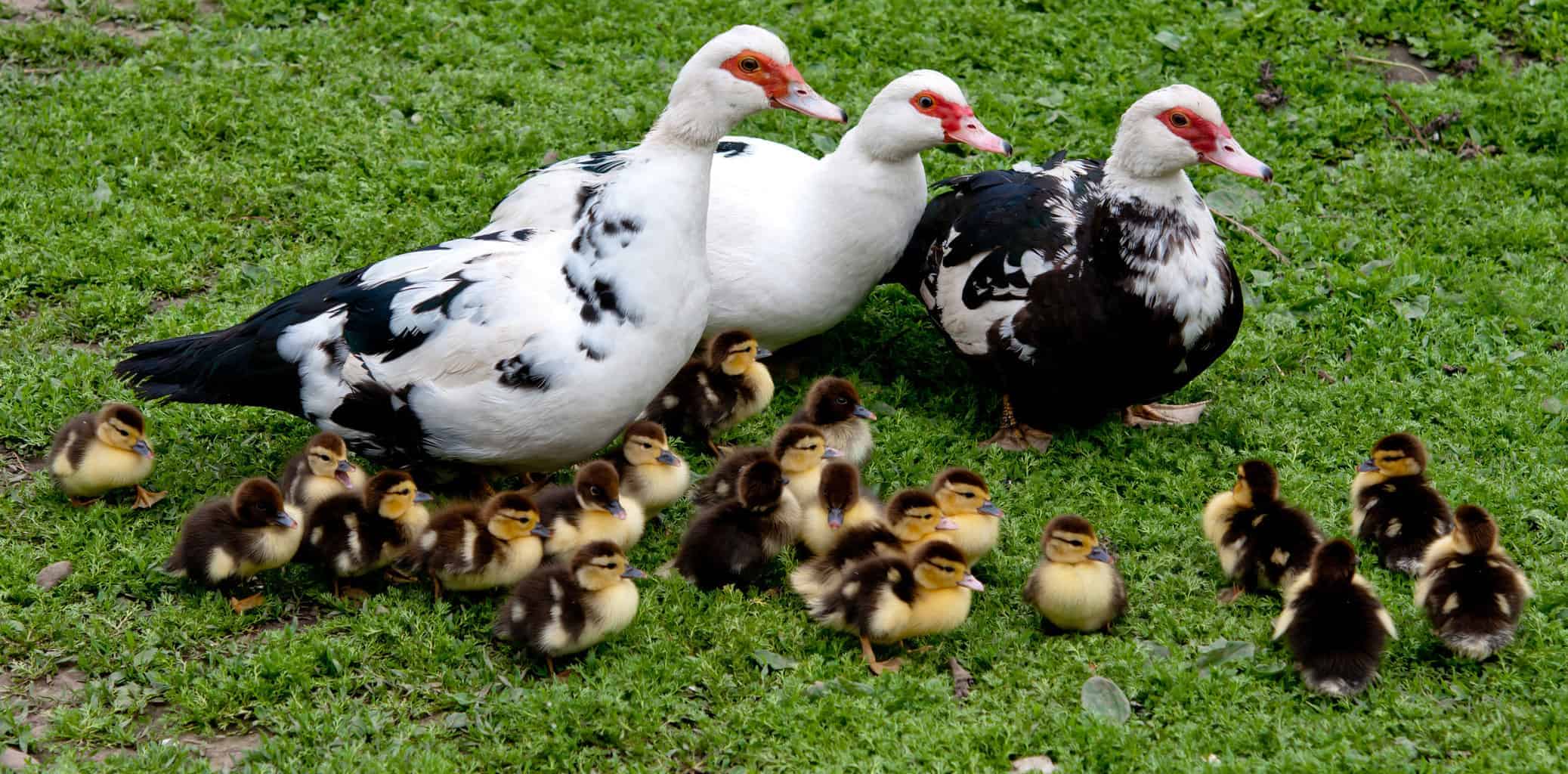
One of the most intriguing aspects of their natural habitat is their preference for roosting in trees at night. Unlike many other waterfowl that nest on the ground, Muscovy ducks seek the safety of elevated perches to avoid ground predators. This behavior underscores their adaptability and resourcefulness, as it provides them with a unique advantage in their ecosystem.
Their presence in forested wetlands also highlights their role in maintaining the ecological balance. By foraging for both plant material and small animals, Muscovy ducks play a critical role in controlling the populations of aquatic and terrestrial vegetation and creatures. This, in turn, benefits the overall health of their habitat, promoting biodiversity and ecological stability.
Overall, the natural habitat of Muscovy ducks is a testament to their adaptability and ecological importance. Their preference for areas that offer both water and vegetation highlights their semi-aquatic nature and showcases their role as key players in their ecosystems.
Geographic Range
The geographic range of Muscovy ducks is extensive, covering a significant portion of the Americas. They are native to regions stretching from Mexico, throughout Central America, and down to South America. In North America, wild populations are predominantly found along the lower Rio Grande in southern Texas, extending further south into Mexico and tropical areas of Central and South America. Their range includes countries with diverse climates and habitats, such as Brazil, Argentina, and Colombia, illustrating their remarkable adaptability.
In addition to their native range, Muscovy ducks have established populations in various other regions globally. Notably, they have been introduced to parts of the United States, primarily in states like Texas, Louisiana, and Florida, where they have adapted well to the local environments. These feral populations are often found in urban and suburban areas, as well as various wetland habitats.
Beyond the Americas, Muscovy ducks can be found in parts of Europe, New Zealand, and Australia, where they have either been introduced deliberately or have established populations through feral escapees. Their ability to thrive in such varied climates, from the tropical regions of the Amazon basin to cooler temperate zones, underscores their versatility and resilience.
The geographic range of Muscovy ducks is a testament to their adaptability and survival skills. Their ability to establish populations in diverse climates and regions highlights their ecological significance and the role they play in various ecosystems. The presence of Muscovy ducks in both their native and introduced ranges showcases their importance as a species that can contribute to biodiversity and ecological balance in different habitats.
Domestication in Different Regions
The domestication of Muscovy ducks has a rich history that dates back centuries, with evidence suggesting that they were domesticated by indigenous peoples in Central and South America long before the arrival of Europeans. The Aztecs, in particular, are known to have valued Muscovy ducks for their meat and feathers, integrating them into their agricultural systems and cultural practices.
In North America, domesticated Muscovy ducks are commonly found on farms, in parks, and in private homes. Their ability to adapt to various climates, including the colder regions of North America, has made them a popular choice for small-scale farmers and poultry enthusiasts. Feral populations in states like Texas, Louisiana, and Florida have further contributed to their prevalence in the region.
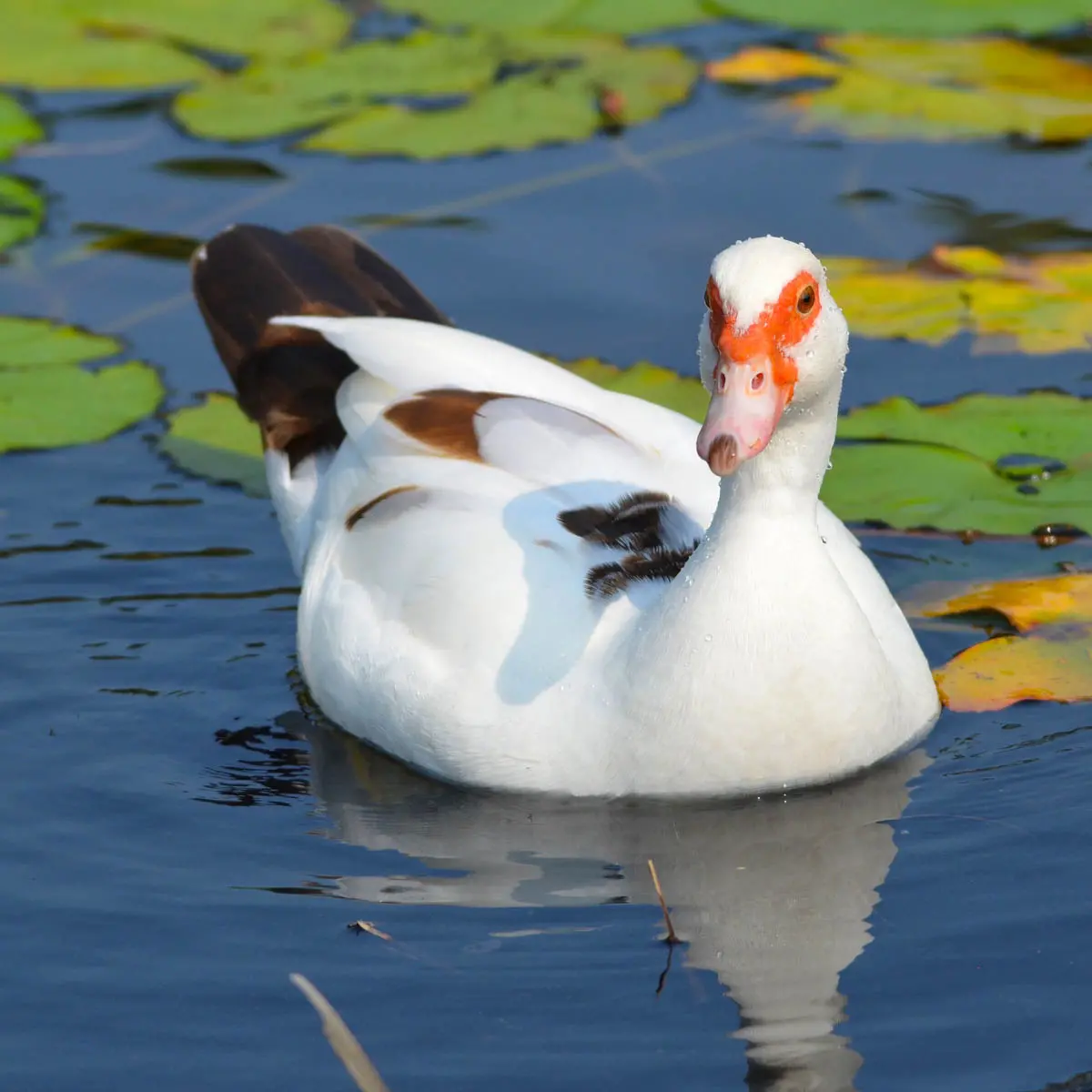
In Europe, Muscovy ducks have established feral populations, particularly in suburban environments. Their presence in various European countries is a result of both deliberate introduction and escape from captivity. These ducks have adapted well to the local climates and have become a part of the ecological fabric in many regions.
In Australia and New Zealand, Muscovy ducks have also established themselves, often thriving in both urban and rural settings. Their ability to coexist with humans and adapt to different environments has facilitated their spread across continents, making them a common sight in various habitats worldwide.
The domestication of Muscovy ducks in different regions highlights their versatility and adaptability. Their historical significance as a source of food and feathers, coupled with their ability to thrive in diverse climates, underscores their importance in agricultural systems globally. The widespread presence of Muscovy ducks in both domesticated and feral populations speaks to their resilience and the value they bring to various ecosystems and human communities.
Behavior and Social Structure of the Muscovy Duck
Muscovy ducks exhibit a diverse range of behaviors and social structures that contribute to their adaptability in various environments. These ducks are primarily diurnal, meaning they are active during the day and often spend their nights roosting in trees or on the ground. Their social interactions can be complex, involving various forms of communication, territoriality, and mating behaviors. Males are known to be aggressive, often competing for territory, food, and mates, while females generally engage in less aggressive interactions. Their feeding habits reflect their adaptability, as they forage for a variety of food items both on land and in water. These behaviors and social structures enhance their survival and adaptability in various habitats.
Social Interactions
Muscovy ducks are social animals that typically form loose groups consisting of small couples or flocks. Their social interactions can be intricate, involving a range of communication methods and behaviors. Males, in particular, display aggressive behavior, often competing for territory, food, and mates. This aggression is most pronounced during breeding seasons when dominance hierarchies emerge. Fights among males can be intense, involving physical confrontations that determine access to resources and mating opportunities.
In contrast, females generally exhibit less aggressive behavior. They tend to form social bonds with other females and males within the flock, engaging in cooperative behaviors such as foraging and raising ducklings. Female Muscovy ducks are known for their strong maternal instincts, often taking the lead in nesting and caring for their young. This maternal behavior significantly influences the social structure within the flock, with females playing a central role in nurturing and protecting the next generation.
Communication among Muscovy ducks involves a variety of vocalizations and visual signals. Males typically produce low, breathy calls, while females emit softer, trilling coos. These vocalizations, along with tail wagging and head movements, convey different messages within the flock, such as signaling danger, attracting mates, or asserting dominance.
Territoriality is a crucial aspect of their social interactions. Males defend their breeding areas vigorously, which can lead to aggressive encounters, especially when resources are scarce or during mating seasons. This territorial behavior ensures that dominant males secure the best nesting sites and food sources, which can enhance their reproductive success.
Feeding Habits
Muscovy ducks are omnivorous, displaying diverse feeding habits that contribute to their adaptability. Their diet includes plant materials such as roots, stems, leaves, and seeds, as well as small aquatic creatures like fish, amphibians, and insects. This varied diet allows them to exploit both terrestrial and aquatic food sources effectively, making them highly adaptable to different environments.
Their feeding behavior involves dabbling in shallow waters and grazing on land, where they forage for a wide range of food items. Muscovy ducks are proficient foragers, often seen exploring their surroundings for roots, stems, leaves, seeds, and small aquatic creatures. This behavior highlights their ability to exploit various food sources and adapt to different habitats.
In social settings, feeding behavior can be influenced by the dominance hierarchy within the flock. Dominant males often defend prime foraging spots, restricting access to subordinate ducks. This territoriality influences the feeding habits and overall social dynamics within the group. In cooperative settings, Muscovy ducks can be observed sharing food resources and foraging together, reflecting their social nature.
Nesting and Reproduction
Nesting and reproduction are pivotal aspects of the Muscovy duck’s behavior and social structure. In the wild, Muscovy ducks are unique among ducks for their nesting habits; they typically select elevated locations, often nesting in tree cavities. These nests are constructed from small twigs, grasses, and down feathers, providing insulation for the eggs.
In domestic settings, Muscovy ducks adapt well to nesting in secure boxes or similar structures that mimic tree cavities. These nest boxes should be enclosed and slightly raised to protect against ground predators and ensure a comfortable environment for egg-laying. The female Muscovy duck exerts control over the nesting process, typically laying 8 to 16 eggs per clutch, with an incubation period of about 35 days.
Muscovy ducks practice polygyny, meaning that dominant males mate with multiple females, especially those nesting within their territories. Males display visual signals, such as crest displays, to attract females and assert dominance over other males. The breeding season occurs from early August to May, during which females can raise multiple broods.
After the eggs hatch, the female provides care to her ducklings for about 60 to 70 days, teaching them vital survival skills such as foraging and swimming. The social structure during this period is maternal-centric, with females actively guarding their young against potential threats. Males may assist by staying nearby to provide protection, although their primary role is to secure the territory.
Health and Care of the Muscovy Duck
Muscovy ducks are generally hardy, but they require specific care to ensure their health and well-being. Understanding common health issues, dietary needs, and housing requirements is crucial for maintaining a healthy flock. Common health issues include wet feather, anemia, foamy eye, bumblefoot, and infestations of lice, mites, and parasites. Proper care involves providing a balanced diet, access to clean water, and a clean, safe living environment. Regular health checks, vaccinations, and biosecurity measures are essential to prevent diseases and ensure the overall health of Muscovy ducks.
Common Health Issues
Muscovy ducks, while generally hardy, can be susceptible to several health issues that require attention and care. Here are some of the common health problems and ways to address them.
- Wet Feather: This condition occurs when feathers become waterlogged and fail to provide insulation. It often results from inadequate bathing or dirty living conditions. To remedy this issue, ensure that Muscovy ducks have access to clean water for bathing and keep their living area dry and clean. Additionally, including Black Oil Sunflower Seeds in their diet can help restore the natural oils in their feathers, enhancing their health and waterproofing.
- Anemia: Anemia in Muscovy ducks is characterized by a loss of color in the caruncles (the fleshy parts around the face) and can occur due to poor diet or lack of foraging opportunities. Providing a balanced diet rich in greens and allowing the ducks to free range can help correct this condition. Supplementing their diet with wet dog or cat food can also improve their nutritional intake.
- Foamy Eye: Foamy eye involves excessive tearing or foaming in the eye, often caused by a lack of bathing, eye injury, or stress. Providing ample opportunities for bathing usually resolves this condition. If symptoms persist, it may indicate an underlying illness, and veterinary consultation may be necessary.
- Bumblefoot: Bumblefoot is a bacterial infection that affects the footpads, causing swelling and pain. It is often caused by Staphylococcus bacteria and can result from injuries or unsanitary conditions. Early treatment involves cleaning the affected area and possibly administering antibiotics. In severe cases, surgical intervention may be required.
- Lice, Mites, and Parasites: Infestations of lice, mites, and parasites can cause feather loss, irritation, and anemia in Muscovy ducks. Regular checks and treatments using medicated dust or sprays can help manage these infestations and ensure the ducks’ well-being.
- Angel Wing: Angel wing is a condition where wing feathers grow improperly, often due to excess protein in their diet or genetic factors. Early intervention can treat this condition, but it becomes permanent in fully grown birds.
- Prolapsed Vent: Prolapsed vent occurs when the rectum or cloaca protrudes from the body, usually due to straining from laying eggs or constipation. Treatment often requires gentle manipulation or, in severe cases, surgical repair.
Dietary Needs
Muscovy ducks are omnivorous and require a balanced diet to ensure their health and well-being. Here are someimportant aspects of their dietary needs:
Commercial Feed
- Nutritionally Balanced Pellets: Commercial feeds specifically formulated for ducks are essential in ensuring that Muscovy ducks receive all the necessary nutrients. These feeds generally contain an adequate balance of protein, carbohydrates, fats, vitamins, and minerals.
- Duckling Feed: For young ducklings, a high-protein starter feed is recommended during their initial weeks of life. These feeds should be supplemented with brewer’s yeast to promote healthy growth and prevent deficiencies.
Foraging and Natural Diet
- Natural Foraging: Muscovy ducks are proficient foragers and will benefit greatly from access to natural vegetation. Free-ranging allows them to consume leaves, aquatic plants, insects, small fish, and worms, providing essential protein and vitamins.
- Diverse Diet: Their diet in the wild includes a mix of plant matter such as grass, seeds, and algae, as well as small aquatic animals. This varied diet supports their overall health and helps mimic their natural feeding behavior.
Kitchen Scraps and Supplements
- Safe Scraps: Muscovy ducks can be fed kitchen scraps like vegetables, fruits, and grains. However, it’s crucial to avoid feeding them toxic foods such as avocado, onions, garlic, and processed items high in salt and sugar.
- Protein Supplements: Additional protein sources, especially during winter or for breeding ducks, can include live or freeze-dried insects like crickets or mealworms.
Water Access
- Constant Supply: Access to fresh and clean water is imperative for both drinking and bathing. Clean water supports hydration, aids digestion, and allows them to engage in natural behaviors like swimming and preening.
Housing Requirements
Proper housing is crucial for the health and welfare of Muscovy ducks. Here are some key considerations:
Space Requirements
- Adequate Space: Each Muscovy duck requires an average of 15 square feet of outdoor space to prevent stress and aggression. Adequate space ensures they have enough room to forage, explore, and engage in social behaviors.
- Outdoor Pens: Outdoor housing should include a sheltered area and a wading pool for water access. Ducks enjoy swimming, which helps maintain their feather condition and provides exercise.
Housing Design
- Well-Ventilated Coops: The duck coop should be well-ventilated to prevent respiratory issues and should provide a dry environment free from drafts. Proper ventilation also helps control humidity and reduce the risk of condensation, which can lead to mold growth and other health problems.
- Roosting Areas and Nesting Boxes: Muscovy ducks prefer to perch, so sturdy roosts should be provided. Nesting boxes, slightly raised and enclosed, offer secure and comfortable spaces for egg-laying.
Ground Cover
- Clean Bedding: Using straw or wood shavings as bedding can manage waste effectively and provide a comfortable resting area for ducks. Regular cleaning and replacement of bedding help maintain a hygienic living environment, reducing the risk of infections and parasites.
Protection from Predators and Elements
- Safety Measures: The housing should be predator-proof to protect ducks from potential threats such as foxes, raccoons, and other predators. Enclosures should be secure and built with materials that prevent entries, such as heavy-duty wire mesh.
- Weather Protection: Ensuring the housing can protect ducks from harsh weather conditions is essential. Providing adequate shelter from extreme heat, cold, rain, and snow helps keep the ducks healthy and stress-free.
Sanitation and Biosecurity
- Regular Cleaning: Maintaining cleanliness in the coop and surrounding areas is crucial. Regular cleaning helps prevent the buildup of waste, reduce the risk of disease, and create a comfortable environment for the ducks.
- Biosecurity Measures: Implementing biosecurity practices, such as controlling access to the duck area, minimizing exposure to wild birds, and promptly addressing any signs of illness, helps prevent the spread of diseases.
By adhering to these dietary and housing guidelines, caretakers can ensure that Muscovy ducks remain healthy, comfortable, and productive. Providing a well-balanced diet, clean water, adequate space, and secure housing contributes to the overall well-being of these remarkable birds.
Historical Significance of the Muscovy Duck
The Muscovy duck holds substantial historical significance, particularly in the context of agriculture and cultural practices. Originating from tropical America, the Muscovy duck was domesticated long before the European conquest of the Americas. Indigenous peoples, including the Aztecs, valued these ducks for their meat and feathers, integrating them into their agricultural systems and traditions. Though not as economically pivotal as turkeys or chickens, Muscovy ducks played a role in household economies. Early Spanish explorers contributed to their spread, introducing them to various regions. Today, they continue to be valued for their meat, particularly in niche markets and among specific cultural groups.
Role in Agriculture
The role of Muscovy ducks in agriculture is multifaceted, encompassing their use as a source of meat, feathers, and pest control. Historically, indigenous peoples in Central and South America integrated Muscovy ducks into their agricultural systems, utilizing them for their meat and feathers. The ducks’ meat is particularly valued for its quality, possessing a lower fat content compared to other duck breeds. This makes Muscovy duck meat a healthier and sought-after option for consumers, contributing to its popularity among certain cultural groups, such as the Hmong in the United States.
Meat Production
- Quality and Demand: Muscovy duck meat is prized for its rich flavor and lower fat content. This quality makes it appealing to health-conscious consumers and contributes to its increasing demand in gourmet markets.
- Meat Yield: The live weight of domestic Muscovy ducks can range from 4.5 to 5.1 kilograms, highlighting their potential for substantial meat production. Optimal rearing conditions can enhance meat yield, making them a valuable asset for small-scale farmers.
Agricultural Practices
- Versatility and Integration: Muscovy ducks have adapted to various environments, from humid tropics to high elevations in the Andes. This adaptability showcases their versatility and resilience, allowing them to integrate into diverse agricultural practices across Latin America.
- Sustainable Farming: Introduction of artificial nest boxes and sustainable practices has facilitated breeding and conservation efforts. Muscovy ducks are regarded as an important economic asset for small farmers, particularly in areas where conventional poultry farming may not be feasible.
Pest Control
- Natural Foragers: Muscovy ducks’ omnivorous diet includes insects and other small pests, making them effective natural pest controllers. This behavior benefits agricultural systems by reducing the need for chemical pesticides, promoting a more ecological approach to farming.
Cultural Importance in Different Countries
The cultural significance of Muscovy ducks varies across countries, reflecting unique historical contexts and practices. Indigenous peoples in Central and South America historically integrated Muscovy ducks into their agricultural and cultural traditions, using them for meat, feathers, and as part of ceremonial practices.
United States
- Ethnic Communities: In the United States, Muscovy ducks have found particular cultural importance among ethnic communities such as the Hmong. These communities value Muscovy ducks for their traditional culinary uses and their adaptability to small-scale farming practices.
- Cultural Heritage: The ducks’ integration into celebrations and culinary traditions reflects their importance in maintaining cultural heritage and identity among immigrant communities.
Latin America
- Indigenous Practices: Indigenous cultures in Central and South America historically valued Muscovy ducks for their meat and feathers. These ducks played a role in ceremonial practices and daily life, showcasing their cultural significance.
- Agricultural Systems: The integration of Muscovy ducks into traditional agricultural systems highlights their versatility and importance in supporting local economies and food security.
Europe and Other Regions
- Introduction and Adaptation: European explorers introduced Muscovy ducks to various regions, where they adapted to local environments and became integrated into farming and culinary practices.
- Cultural Practices: In some European countries, Muscovy ducks have found a niche in gourmet cuisine, reflecting their valued status as a source of high-quality meat.
The historical and cultural significance of Muscovy ducks is a testament to their versatility and value in various contexts. Their role in agriculture, cultural traditions, and sustainability highlights their importance as a species that has adapted to diverse environments and continues to contribute to human societies.
Muscovy Duck vs. Other Duck Breeds
When comparing Muscovy ducks with other duck breeds, such as Pekin and Khaki Campbell ducks, several distinctive characteristics, behaviors, and uses stand out. Each breed has unique traits that make it suitable for different purposes, whether it be for meat production, egg laying, or adaptability to various environments.
Comparison with Pekin Ducks
Muscovy ducks and Pekin ducks, two different breeds, have various distinctions in terms of flavor profile, appearance, meat tenderness, fat content, and egg production.
Flavor Profile
- Muscovy Duck: Known for its robust and intense flavor, Muscovy duck meat is richer and more pronounced, suitable for hearty dishes and bold seasonings. This flavor is influenced by the higher fat content and the maturity of the duck at processing.
- Pekin Duck: Utilized for a milder and more neutral flavor, Pekin duck meat is versatile and adaptable to various culinary applications. This subtlety makes it ideal for dishes that seek a leaner taste profile without overpowering other ingredients.
Appearance
- Muscovy Duck: Muscovy ducks have variable plumage, often showcasing dark hues, and are identifiable by the distinctive fleshy red facial skin on males. The meat is dark red, contributing to its luxurious visual appeal in dishes.
- Pekin Duck: Generally, Pekin ducks exhibit a uniform white coloration with a more consistent appearance. The meat is paler and less visually striking compared to Muscovy duck.
Meat Tenderness and Fat Content
- Muscovy Duck: Typically, Muscovy duck meat is tougher due to the ducks’ older processing age and more developed muscles. It often requires careful cooking techniques, such as braising or marinating, to achieve desired tenderness.
- Pekin Duck: Naturally more tender because it is processed at a younger age, Pekin duck meat has a lower fat content, allowing for simpler cooking methods and an overall less concern over toughness.
Egg Production
- Muscovy Duck: Lays between 60 to 120 eggs annually with larger egg sizes. Muscovy hens are known for their broody nature, tending well to their clutches.
- Pekin Duck: Exceptionally prolific in egg production, laying approximately 200 to 300 eggs per year. This high egg yield makes Pekin ducks an ideal choice for those focused on egg production.
Differences from Khaki Campbell Ducks
Muscovy ducks and Khaki Campbell ducks differ significantly in terms of egg-laying capacity, flavor and culinary uses, behavior and adaptability, and market availability and use.
Egg Laying Capacity
- Muscovy Duck: Produces fewer eggs compared to Khaki Campbell ducks, with an annual yield of about 60 to 120 eggs. Muscovy hens are known for their strong brooding instincts, often incubating large clutches of eggs.
- Khaki Campbell Duck: Known for their impressive egg-laying capabilities, Khaki Campbell ducks can produce up to 350 eggs per year. Their prolific egg production makes them highly valued for those prioritizing egg yields.
Flavor and Culinary Uses
- Muscovy Duck: Favored for its rich and gamey flavor, Muscovy duck meat is suitable for recipes demanding a bold taste. It is appreciated in gourmet cuisine for its unique flavor profile.
- Khaki Campbell Duck: While not primarily raised for meat, Khaki Campbell ducks have mild-flavored meat that can serve well in various cooking applications. They are predominantly valued for their egg-laying prowess.
Behavior and Adaptability
- Muscovy Duck: Known for being more independent and proficient at foraging, Muscovy ducks adapt well to diverse environments. They tend to socialize well with other duck breeds and are versatile in their habitat preferences.
- Khaki Campbell Duck: Generally more sociable and easier to manage in a flock setting, Khaki Campbell ducks are often kept for both eggs and companionship due to their friendly dispositions.
Market Availability and Use
- Muscovy Duck: More niche in terms of market presence, Muscovy ducks are primarily found in specialty butchers and among gourmet food providers. Their unique flavor and less common usage distinguish them from more widely available duck breeds.
- Khaki Campbell Duck: More widely available and integrated into poultry farms for their efficient production rates, Khaki Campbell ducks are commonly found in markets supporting high egg production needs.
In summary, the comparison between Muscovy ducks, Pekin ducks, and Khaki Campbell ducks highlights the unique traits and uses of each breed. Muscovy ducks stand out for their distinctive flavor and culinary qualities, while Pekin and Khaki Campbell ducks excel in egg production. Each breed possesses characteristics suited to different preferences in culinary applications and husbandry practices, offering valuable insights for farmers and culinary enthusiasts alike.
Culinary Uses of Muscovy Duck
Muscovy duck is renowned for its rich flavor and versatility in various culinary applications. The meat is darker and has a higher fat content than that of common ducks like the Pekin, which makes it well-suited to a variety of cooking methods and preparations.
Cooking Methods for the Muscovy Duck
Muscovy duck meat can be prepared in numerous ways, each enhancing its robust flavor. Here are some popular cooking methods:
Roasting
- Traditional Roasting: This method involves seasoning the duck with aromatics like celery, onion, and garlic, and then roasting it to achieve a medium-rare center. The crispy skin and tender meat make for an elegant main dish. One favorite method involves arranging the duck in a pan and cooking it until the internal temperature reaches a desired degree of doneness, creating a harmonious balance of flavors and textures.
Pan-Seared Breasts
- Seared and Finished in Oven: Pan-searing duck breasts emphasizes the rich flavors while achieving a crispy skin. It is recommended to cook the breasts fat-side down in a cold pan to render the fat before searing the other side. Once seared, finishing them in the oven ensures even cooking and a perfect texture.
Glazing and Saucing
- Blackberry Glaze: A sweet and tangy blackberry glaze can enhance the savory notes of Muscovy duck meat. The glaze is typically prepared with reduced blackberries, sugar, and vinegar, which can be brushed onto the duck during the final stages of roasting.
- Pomegranate Glaze: Pomegranate glaze is another popular option, featuring a reduction of pomegranate juice, sugar, and spices, offering a complex flavor profile that pairs excellently with the duck’s richness.
Braising and Stewing
- Slow Cooking: Muscovy duck can also be used in slow-cooked dishes such as braises and stews. These methods allow the flavors to meld and develop over time, creating rich and hearty meals. Braising typically involves cooking the duck slowly in a potent broth or wine, resulting in tender meat that falls off the bone.
Nutritional Value of the Muscovy Duck
Muscovy duck meat is known for being lean and rich in flavor. It offers high nutritional value, which includes:
- Protein: A substantial amount of protein, providing essential amino acids for muscle growth and repair.
- Vitamins: Rich in B vitamins, including niacin, riboflavin, and B12, which support metabolism and energy production.
- Minerals: Contains minerals such as iron and selenium, crucial for immune function and antioxidant defense.
- Calories and Fat: A 3.5-ounce serving of roasted Muscovy duck breast without skin typically contains around 140-250 calories and about 7-15 grams of fat, making it a relatively low-fat option among duck meats.
These nutritional benefits make Muscovy duck a valuable addition to a balanced diet, offering essential nutrients while providing a rich culinary experience.
Popular Recipes for the Muscovy Duck
Here are some popular recipes that feature Muscovy duck, showcasing its versatility and rich flavor:
- Roast Muscovy Duck with Vegetables:
- Preparation: Season the duck with salt, pepper, and herbs. Arrange it in a roasting pan with vegetables like carrots, celery, and onions. Roast until the skin is crispy and the meat is tender.
- Serving: Serve with roasted vegetables and a red wine reduction sauce.
- Muscovy Duck Breast with Blackberry Glaze:
- Preparation: Sear the duck breasts in a pan until the skin is crispy. Prepare a blackberry glaze using reduced blackberries, sugar, and vinegar. Brush the glaze onto the duck during the final stages of cooking.
- Serving: Pair with sweet potato puree and steamed greens.
- Pan Roasted Duck Breast with Clementine-Tomatillo Sauce:
- Preparation: Sear duck breasts in a pan, then roast in the oven until done. Prepare the sauce by reducing clementine juice and tomatillos with spices.
- Serving: Serve the duck breast sliced with the sauce, accompanied by wild rice or a fresh green salad.
- Five-Spice Duck Breast:
- Preparation: Marinade the duck breasts with five-spice powder, soy sauce, and honey. Sear in a hot pan, then roast until done.
- Serving: Pair with steamed vegetables and jasmine rice for a complete meal.
- Seared Muscovy Duck Breast with Black Pepper-Sweet Mustard Sauce:
- Preparation: Sear the duck breast until the skin is crispy. Prepare a sauce using black pepper, sweet mustard, and a splash of white wine.
- Serving: Serve with creamy polenta and roasted asparagus.
Contribution to Biodiversity
The contribution of Muscovy ducks to biodiversity is significant, particularly in their roles within ecosystems. Here are some key aspects:
- Pest Control: Muscovy ducks help control insect populations, reducing the need for chemical pesticides and promoting a healthier environment.
- Foraging Behavior: Their foraging habits aid in nutrient cycling, as they consume a variety of plant materials and small aquatic creatures, contributing to ecosystem balance.
- Habitat Utilization: Muscovy ducks utilize diverse habitats, ranging from wetlands to urban areas, showcasing their adaptability and resilience.
Effects on Agricultural Practices
Breeding Muscovy ducks can have profound effects on agricultural practices, enhancing sustainability and efficiency. Here are some innovative practices:
- Crop-Livestock Integration: Muscovy ducks can be integrated into crop systems, such as maize fields, contributing to pest control and soil health.
- Reduced Reliance on Feed: Their ability to forage effectively minimizes the need for concentrated feed, reducing the environmental impact of feed production.
- Biodiversity Promotion: By utilizing crop residues and foraging naturally, Muscovy ducks support biodiversity and improve soil structure.
Breeding Muscovy Ducks
Breeding Muscovy ducks involves selecting suitable breeding stock, understanding the incubation process, and raising ducklings with proper care. Here are some detailed aspects:
Selecting Breeding Stock
Selecting high-quality breeding stock is crucial for successful breeding. Here are some considerations:
- Purpose and Quality: Determine the purpose of breeding (meat, eggs, or aesthetics) and select ducks that meet these criteria. High-quality breeding stock typically costs more but ensures healthier and more productive offspring.
- Physical Characteristics: Choose ducks that adhere to breed standards, including body structure, feather coloration, and overall health. Cull any ducks that deviate from these standards to maintain breed integrity.
- Breeder Reputation: Purchase from reputable breeders who provide proof of their birds’ quality and adhere to breeding standards. Ensure the birds are healthy andfree of genetic defects. Understanding the history and practices of the breeder can further inform your choices, ensuring that you invest in high-quality stock that will yield vigorous and healthy ducklings.
Incubation Process for the Muscovy Duck
The incubation process for Muscovy duck eggs is a critical step in ensuring successful hatching. Adhering to optimal conditions throughout the incubation period increases the likelihood of healthy ducklings. Here are detailed guidelines for the incubation process:
Incubation Duration
- Length of Incubation: Muscovy duck eggs have a relatively long incubation period, typically ranging from 33 to 38 days. This duration is longer compared to other duck species, which often hatch in 28 days. Properly monitoring the incubation timeline is crucial for success.
Temperature and Humidity
- Optimal Temperature: The ideal temperature for incubating Muscovy duck eggs is around 37.5°C (99.5°F). Maintaining a consistent temperature is essential to avoid developmental issues.
- Humidity Levels: Humidity should be kept at approximately 55% for the majority of the incubation period. Increasing the humidity to around 65% in the last few days before hatching helps soften the eggshell and ease the hatching process.
Egg Turning
- Importance of Turning: Regularly turning the eggs, at least four times a day, is necessary to prevent the developing embryo from sticking to the shell membrane. This mimics the natural behavior of a mother duck and ensures the proper development of the embryo.
Candling
- Viability Assessment: Candling the eggs around the seventh day of incubation can help assess their viability. Using a bright light source, you can observe the formation and growth of the embryo. Discard any non-viable or infertile eggs to maintain an efficient incubation environment.
Lockdown Procedures
- Final Days Before Hatching: On or around day 30, initiate the lockdown procedure by stopping the rotation of the eggs, maintaining the appropriate temperature, and increasing the humidity. This preparation ensures that the eggs are in optimal condition for hatching.
Raising Muscovy Duck Ducklings
Raising Muscovy ducklings requires careful attention to their needs to ensure they grow into healthy adults. Here’s a detailed overview of the necessary steps and considerations:
Housing and Environment
- Brooder Setup: A brooder with a clean, warm, and dry environment is essential for the first few weeks of a duckling’s life. The temperature should be maintained at around 32°C (90°F) during the first week, gradually decreasing by 2.8°C (5°F) each week until ambient temperature is reached.
- Substrate: Use materials like straw or wood shavings as bedding for the brooder. Avoid using newspaper or other slippery surfaces that can cause leg injuries.
Feeding and Nutrition
- Starter Feed: Provide a nutritionally balanced starter feed formulated for ducklings. Adding supplements like brewer’s yeast can help support healthy growth and prevent deficiencies.
- Water Access: Ensure constant access to clean water. Ducklings need water not only for drinking but also for aiding in digestion. Using shallow water bowls prevents the risk of drowning while allowing them to drink comfortably.
Health Monitoring
- Regular Checks: Monitor the ducklings daily for any signs of health issues such as lethargy, unusual feather development, or difficulty breathing. Promptly address any concerns with appropriate treatments or veterinary care.
- Vaccinations: Vaccinate ducklings against common diseases as recommended in your region. Following a vaccination schedule helps build immunity and prevent outbreaks.
Socialization and Development
- Interaction: Regular human interaction can help ducklings become accustomed to handling and reduce stress. Allowing them to socialize with other ducklings promotes natural behaviors and builds their confidence.
- Foraging Opportunities: As they grow, gradually introduce ducklings to outdoor environments where they can forage. This practice supports their natural instincts and helps them adapt to a varied diet.
By following these detailed steps, you can ensure that Muscovy ducklings receive the care they need for a healthy start in life, laying the foundation for robust and productive adults.
Interesting Facts about Muscovy Ducks
Muscovy ducks possess intriguing traits and characteristics that make them fascinating subjects for both casual observers and dedicated caretakers. Here are some interesting facts that highlight their uniqueness:
Lifespan of the Muscovy Duck
The lifespan of Muscovy ducks can vary significantly depending on their environment and care. In the wild, they typically live around 7 to 8 years, but with proper care in domestic settings, they can live significantly longer, reaching up to 15 to 20 years. Their longevity is influenced by several factors, including genetics, environmental quality, predation risk, and the level of care they receive.
Environmental Impact on Lifespan
- Wild vs. Domestic: Wild Muscovy ducks face natural predators and environmental challenges that can limit their lifespan to around 7 to 8 years. In contrast, domesticated ducks can live up to 15 to 20 years with proper care.
- Care and Maintenance: Providing a balanced diet, clean housing, regular health checks, and protection from predators can significantly extend the lifespan of Muscovy ducks.
Unique Traits of the Muscovy Duck
Muscovy ducks are characterized by several unique traits that distinguish them from other duck species:
Physical Appearance
- Sexual Dimorphism: Males are significantly larger than females, often weighing between 10 to 15 pounds (4.5-6.8 kg), while females typically weigh around 6 to 8 pounds (2.7-3.6 kg). Their plumage is predominantly black with white markings and iridescent green hues on their wings. The red facial caruncles are more pronounced in males, adding to their distinctive look.
Behavior
- Vocalizations: Unlike most ducks, Muscovy ducks do not quack. Instead, they communicate through hissing sounds and soft trills. This quieter nature makes them less disruptive and more suitable for urban or suburban settings.
- Affectionate Nature: Muscovy ducks tend to bond with humans if raised in a familiar environment. They can show signs of affection and exhibit behaviors similar to pets, such as wagging their tails when happy.
Nest Building
- Tree Nesters: Muscovy ducks are unique among ducks for their nesting habits, often choosing elevated locations such as tree cavities. They construct nests using twigs, grasses, and down feathers, which provide insulation for their eggs.
Myths and Misconceptions about the Muscovy Duck
Despite their fascinating characteristics, several myths and misconceptions surround Muscovy ducks. Here are some facts to dispel common misunderstandings:
Not a True Duck
- Classification: While Muscovy ducks belong to the family Anatidae, they are more closely related to geese than to other duck species, making them unique within the waterfowl world.
Origin
- Name Confusion: The name “Muscovy” might imply a Russian origin, but these ducks are actually native to Central and South America. The name likely comes from the Muscovy Company, which transported these ducks to Europe in the 16th century.
Egg Production
- Egg Laying Capacity: Muscovy hens typically lay between 60 to 120 eggs per year, which is lower compared to other domestic duck breeds. They usually incubate a clutch of about 8 to 16 eggs but can care for up to 30 eggs at a time.
Diet and Habitat
- Foraging Habits: Contrary to the belief that Muscovy ducks must be raised in water, they are largely grazers and prefer foraging for grass, aquatic plants, insects, and small aquatic animals on land. While they enjoy swimming, they are less dependent on water than typical ducks.
These interesting facts and clarifications provide a deeper understanding of Muscovy ducks, highlighting their unique traits, behaviors, and the misconceptions that often surround them.
Conclusion
Muscovy ducks (Cairina moschata) are a fascinating species with a rich history and a wide range of uses in both ecological and agricultural contexts. Their distinctive physical appearance, including unique color variations, sexual dimorphism, and red facial caruncles, make them instantly recognizable. In terms of behavior and social structure, Muscovy ducks exhibit diverse feeding habits, complex mating behaviors, and strong maternal instincts.
Their adaptability allows them to thrive in various environments, from the wetlands of Central and South America to urban areas in North America, Europe, and beyond. As domesticated birds, they hold significant historical and cultural importance, especially among indigenous peoples and ethnic communities.
In agriculture, Muscovy ducks are prized for their meat, which is rich in flavor and lower in fat compared to other duck breeds. Their unique foraging habits also contribute to pest control and ecological balance, making them valuable assets in sustainable farming practices. Additionally, their longer incubation period and strong maternal care distinguish their breeding process from other duck species.
Despite common myths and misconceptions, Muscovy ducks are relatively easy to care for, provided they receive proper nutrition, housing, and regular health checks. Their unique traits and behaviors, coupled with their historical and cultural significance, underscore their importance as both wild and domesticated species.
By understanding and appreciating the various aspects of Muscovy ducks, from their physical characteristics to their ecological roles, we can better appreciate their contributions to biodiversity, agriculture, and cultural heritage. Whether raised for meat, eggs, or simply as fascinating additions to a farm or garden, Muscovy ducks offer a unique and enriching experience for those who care for them.
